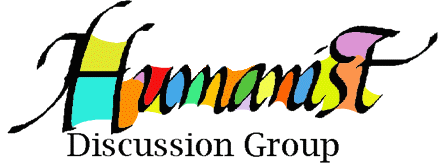Humanist Discussion Group, Vol. 38, No. 405.
Department of Digital Humanities, University of Cologne
Hosted by DH-Cologne
www.dhhumanist.org
Submit to: humanist@dhhumanist.org
Date: 2025-03-15 12:28:14+00:00
From: Tim Smithers <tim.smithers@cantab.net>
Subject: Re: [Humanist] 38.402: on spirits & technology
Dear Willard,
I agree. Alfred Gill's "The Technology of enchantment and the
enchantment of technology," does offer an interesting response
to François' post ... of what is, for me, a rather strange
way of reading the Turing 1950 paper; a piece I would say I
know well, having read it lots of times over the past 40 years
or so. Nahlah Ayed's claim, in the podcast François points us
to, that ...
"... Alan Turning argued that humans might always be able
to outsmart machines, because we have supernatural powers
like ESP, telepathy, and telekinesis."
is, I would say, gross exaggeration at best, and, more
straightforwardly, a product of Nahlah Ayed's imagination,
provoked, I suppose we might say, by their reading of Turing
1950.
But, back to Gill and magic, and to magic as "... the
negative contour of work." I struggle to make sense of this,
though that's certainly no reason to reject this notion of
magic. Still, Gill's magic doesn't distinguish two kinds of
magic which are, I think, relevant to our use of tools and our
development of the technologies we render our tools from, and,
in particular, the kind of magic shown up by today's so called
Generative AI systems; systems that many people describe as
doing thinking, and knowing, and understanding, and reasoning,
and do so, presumably, because they believe these systems do
all this.
Magic, I think, comes in two kinds. One is what I want to
call real magic: the art of hiding what is really going on so
that those who watch the happening are lead to think something
else is going on; something "magical." This is the magic of
magicians, and it involves genuine skill, the learning of many
sleight of hand moves and actions, and much practice. The
other kind of magic is what I want to call mystical magic, and
so is perhaps closer to Gill's enchantment. This kind of
magic is, I think, often seen in rituals and habitual
performances: we do this like this and it'll make this happen;
rain dances, for example. Or, for a more common example,
"turn off the computer, then turn it on again," to fix the
Windows system failure. Or, for a more recent example, build
an enormous machine that does gigantic amounts of statistical
processing of hieroglyphic text-tokens to have for ourselves
some artificial [flower type] human level intelligent
behaviour. This, as we often see today, causes mystical magic
in big doses: people see "intelligence" where there is none
from their rituals pompously called prompt engineering.
This distinction is, I think, important. The first kind, real
magic, provides us with a plentiful supply of a kind of
intelligent behaviour. Inventing and performing magic tricks
requires -- from some conversations with practicing magicians
-- plenty of real intelligence. The second kind, mystical
magic, depends upon deception and the weakness of mind of the
people who believe in it, and is thus an example of a break
down of intelligent behaviour.
This is not what Gill pushes on in "The Technology of
enchantment and the enchantment of technology," but it does, I
would argue, pick out a needed distinction: real intelligent
behaviour and a failure of intelligent behaviour.
-- Tim
> On 14 Mar 2025, at 06:51, Humanist <humanist@dhhumanist.org> wrote:
>
>
> Humanist Discussion Group, Vol. 38, No. 402.
> Department of Digital Humanities, University of Cologne
> Hosted by DH-Cologne
> www.dhhumanist.org
> Submit to: humanist@dhhumanist.org
>
>
>
>
> Date: 2025-03-13 08:28:11+00:00
> From: Willard McCarty <willard.mccarty@mccarty.org.uk>
> Subject: on spirits and technology
>
> The best response I know to François' posting in Humanist 38.398 is the
> anthropological one from Alfred Gell, first in
>
> "The Technology of enchantment and the enchantment of technology. Art
> and anthropology", The Art of Anthropology: Essays and Diagrams, London
> School of Economics, vol. 67 (Oxford: Berg, 1999, rpt. 2006)
>
> then in much fuller development, with many anthropological and
> art-historical examples in
>
> Art and Agency: An Anthropological Theory (Oxford, 1998, rpt. 2013), a
> work of uncommon brilliance.
>
> For those of us in digital humanities and its allied technical fields, I
> know of no better way of opening the eyes wider than they tend usually
> to be.
>
> The sentence to conjure with is this: "Magic haunts technical activity
> like a shadow; or, rather, magic is the negative contour of work, just
> as, in Saussurean linguistics, the value of a concept (say, 'dog') is a
> function of the negative contour of the surrounding concepts ('cat',
> 'wolf, 'master').." (Gell 1999, 181)
>
> Yours,
> WM
> --
> Willard McCarty,
> Professor emeritus, King's College London;
> Editor, Humanist
> www.mccarty.org.uk
_______________________________________________
Unsubscribe at: http://dhhumanist.org/Restricted
List posts to: humanist@dhhumanist.org
List info and archives at at: http://dhhumanist.org
Listmember interface at: http://dhhumanist.org/Restricted/
Subscribe at: http://dhhumanist.org/membership_form.php
